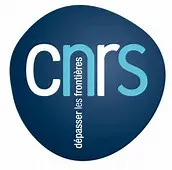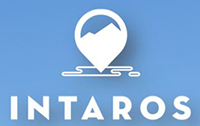
CNRS is a public organization under the responsibility of the French Ministry of Education and Research. CNRS carries out research in all fields of knowledge, including environmental sciences. It employs a large body of tenured researchers, engineers and support staff. Four CNRS units (Unités Mixtes de Recherche, UMR, and Unité mixte Internationale, UMI) are involved in INTAROS : (1) The Laboratoire d’Océanographie et du Climat: Expérimentations et Approches Numériques (LOCEAN) in Paris, (2) the Institut Universitaire Européen de la Mer (IUEM) in Brest, through the Laboratoire des sciences de l’Environnement Marin (LEMAR) and the Laboratoire d’Océanographie Physique et Spatiale (LOPS), (3) the Laboratoire d’Océanographie de Villefranche (LOV) in Villefranche sur mer and (4) the Centre International d’Étude et de Modélisation des Écosystèmes et Géosystèmes Arctiques et Subarctiques (TAKUVIK) in Québec (Canada).
CNRS-LOCEAN (UMR 7159) is a leading laboratory in France employing about 100 permanent scientists in the field of ocean and climate research. The laboratory research focus is a better understanding of the role of the ocean in the coupled climate system and its variability. Topics range from the ocean general circulation to ocean-atmosphere interactions, ocean-sea ice dynamics and biogeochemistry and their coupling at various scales, ocean biology and ecology, and the ocean carbon cycle. LOCEAN is involved in many observational programmes, including several in the polar oceans and coordination of international projects involving ocean observation networks and monitoring systems. LOCEAN is a leading institute in ocean modelling, being responsible for the NEMO model system.
CNRS-IUEM (UMS3113) is a research institute devoted to the ocean and the coastal environment, with a strong multi-disciplinary approach addressing the different scales of the marine environment, from the deep sea floor to the waves at the surface, from microorganisms to complex ecosystems and global biogeochemical cycles, including interactions with human exploitation, and maritime economics and law. Research at IUEM is carried out through Joint Research Units among which : (1) LEMAR with activities on the marine ecosystem functioning and their response to global change. (2) LOPS with research devoted to observing and understanding the ocean dynamics from the global scale to the very sale scales of ocean waves, including ocean turbulence and the coastal oceanography.
CNRS-LOV (UMR 7093) is a joint research unit of CNRS and Université Pierre et Marie Curie (UPMC), the largest scientific university in France and one of the most prestigious universities. LOV is part of the Observatoire Océanologique de Villefranche-sur-mer (OOV), a centre of excellence in oceanography. LOV has been involved in numerous EU projects and has led many initiatives on ocean acidification.
CNRS-TAKUVIK (UMI 3376 CNRS/Université Laval) Since its establishment in 2011 at Université Laval in Québec City, Canada, Takuvik Joint International Laboratory has fast become a leader in the study of ongoing climatic and anthropogenic changes in Arctic marine and terrestrial ecosystems and geosystems. Its state of the art facilities enable researchers to monitor phytoplankton ecophysiology and bio-optical properties under controlled conditions in laboratory and through ocean colour remote sensing. Takuvik has a strong expertise in developing bio-optical instrumentation for the Arctic Ocean. The Canada Excellence Research Chair in remote sensing of Canada’s new Arctic frontier, held by Marcel Babin, is a keystone of the Takuvik program.
Role in the project
CNRS will contribute more specifically to INTAROS in WP3 through deployment and exploitation of autonomous observing systems and integration of multidisciplinary data. Contribution of CNRS-LOCEAN to WP3 will focus on supplementing the multidisciplinary mooring network on the northern Svalbard slope as part of the “North-Svalbard” super site and maintaining endurance glider lines in the European Arctic. CNRS-LOV will contribute to WP3 through: (1) near real time data of the carbonate system in Kongsfjord, (2) a web interface with public access, (3) a compilation of ocean acidification data in the Arctic and (4) a technical paper on the time series station. Contribution of CNRS-IUEM to WP3 will be trough deployment and exploitation of passive acoustic observatories at the “Greenland Coast” and “Fram Strait” sites, allowing to characterize simultaneously the ice environment and the coastal marine ecosystems of these regions. Contribution of CNRS-TAKUVIK to WP3 will be made through monitoring of the biogeochemical properties of the Baffin Bay with the deployment of 18 bio-Argo floats and observations of the coastal environment at a state-of-the-art field station in Qikiqtarjuaq (currently under development). In WP3 TAKUVIK will also monitor snow and permafrost properties through a network of 9 automated field stations distributed from 55°N to 83°N. TAKUVIK will also contribute to WP2 through monitoring of the pan-arctic polar environment based on satellite observations of the ocean color combined with a large suite of additional remotely-sensed information such as ice extent and thickness.
National Center for Scientific Research
3, rue Michel-Ange
75794 Paris cedex 16
France
